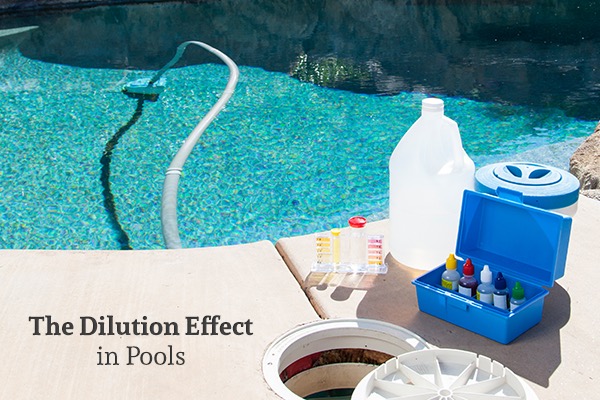
Pools are a fantastic way to escape the heat and have some fun during the summertime. Not only are they a great way to create memories with family and friends, but they also promote healthy exercise which is good for your heart and mind. However, owning your own pool is a great responsibility and requires regular servicing. For example, it is important to add cyanuric acid to your pool as it helps prevent UV rays from dissolving the chlorine. You need to be careful, though, because too much cyanuric acid will decrease the effectiveness of chlorine in the pool. Weakened chlorine cannot defend your pool against the growth of dangerous microorganisms, such as cryptosporidium parvum. It is important to keep an eye on your pool’s chlorine and cyanuric levels and to always make a note of how much you are putting in. If the cyanuric acid levels become too high, you are going to need to dilute them. This article covers what dilution is and how it can help you return your cyanuric acid levels back to normal.
What is Dilution?
Dilution is the process of decreasing the amount of solute in a solution. This is done by mixing more solvent, such as water, into a solution. This ensures that all parts of the solution are equal. For a pool, this means you can equal out the chemical levels by adding in more water; this will decrease the strength of your pool’s chemicals, such as cyanuric acid.
How do I Dilute my Pool?
The first thing you will need to do is determine how much cyanuric acid is already in your pool. This can be accomplished by dipping a test strip 12-18 inches below the water’s surface and allowing it to sit there for a couple of seconds. Then, remove the test strip and wait several minutes for the color to finish changing. Next, compare the color of the test strip with the control color supplied by the manufacturer. Safe cyanuric acid levels will generally be around 30-50 parts per million (PPM). Concentrations above 50 ppm can result in algae growth due to the ineffectiveness of the chlorine in your pool.
Next, make sure you turn off the automatic chlorine feeders or remove the chlorine float from your pool. This will help ensure that more chlorine isn’t sneaking in during the dilution process, encouraging the increase in cyanuric acid. Make sure you do not add any more chlorine into the pool until after you finish the dilution process. Safe chlorine levels should be 1-3ppm.
Dilution Process
Now it is time to test everything out. Begin by turning your filtration system to ‘backwash’ to help drain some of the water out of your pool. If you do not want to mess with the filter, you can vacuum the water instead. The amount of water to drain depends on your cyanuric acid levels and how big your pool is. Typically, draining half of your pool or more should do the trick. Once you are done draining, simply add fresh water back into your pool. This will help lower the chlorine levels and cyanuric acid levels. Once that is done, you will want to test your pool’s water to check the chemical levels. The dilution process will have lowered other essential chemicals in your pool as well. Adjust the chemicals as needed and your pool should be good to go.
Dilution is a simple and natural scientific way to help control the chlorine levels in your pool. If you are unsure and want a professional to help you, make sure you contact Liquidus Pool Services. Our professional team will ensure that your pool’s chemicals are leveled and safe for your family and friends to use. Don’t miss out on a relaxing evening enjoying your pool because the chemical levels are too high. Call Liquidus Pool Services today!
